43 label each part of the atp molecule
› science › biologyKrebs / citric acid cycle (video) | Khan Academy We have, how many NADHs? One, two, three NADHs. So three NADHs times two, because we're going to perform this cycle for each of the pyruvates produced from glycolysis. So that gives us six NADHs. We have one ATP per turn of the cycle. That's going to happen twice. Once for each pyruvic acid. So we get two ATPs. And then we have one FADH2. ANALYTICAL PROCEDURE DEVELOPMENT Q14 ICH Q14 Guideline 4 89 The enhanced approach potentially offers several advantages, including: 90 • Control strategy Understanding of which analytical procedure attributes are essential to procedure 91 performance (i.e., ECs). 92 • Employing predefined performance characteristics (e.g., in the ATP) linked to critical quality 93 attributes (CQAs) Attributes and their acceptance …
SKELETAL MUSCLE ORGANIZATION - Brigham Young … Additionally, each myosin head has an ATPase that binds to and hydrolyses ATP during muscle contraction. It is the ATP that provides the energy for muscle contraction. Each of the myosin heads is associated with two myosin light chains that play a role in regulating the actions of the myosin heads, but the exact mechanism is not fully understood. The three dimensional …
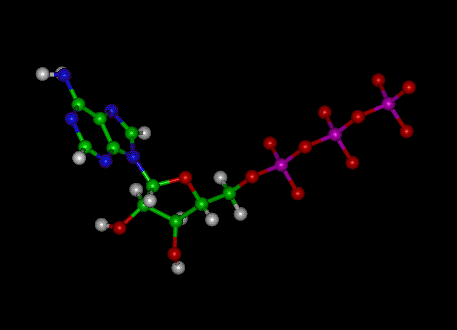
Label each part of the atp molecule
Krebs / citric acid cycle (video) | Khan Academy So we already know that if we start off with a glucose molecule, which is a 6-carbon molecule, that this essentially gets split in half by glycolysis and we end up 2 pyruvic acids or two pyruvate molecules. So glycolysis literally splits this in half. It lyses the glucose. We end up with two pyruvates or pyruvic acids. ruby And these are 3 ... quizlet.com › 567921258 › chapter-3-worksheet-flashChapter 3 Worksheet Flashcards | Quizlet Study with Quizlet and memorize flashcards containing terms like determine from the description which cellular structure each phrase is describing. then click and drag each cellular structure into the correct category to indicate whether it is part of the cytoplasm or the cell membrane, click and drag each label into the correct category to indicate whether it pertains to the cytoplasm or the ... en.wikipedia.org › wiki › Fatty_acidFatty acid - Wikipedia Alternatively, the label "ω−x" is written "n−x", where the "n" is meant to represent the number of carbons in the chain. In either numbering scheme, the position of a double bond in a fatty acid chain is always specified by giving the label of the carbon closest to the carboxyl end.
Label each part of the atp molecule. content.byui.edu › file › a236934c-3c60-4fe9-90aa-dSKELETAL MUSCLE ORGANIZATION - Brigham Young University–Idaho Tropomyosin is a long string-like polypeptide that parallels each F actin strand and functions to either hide or expose the "active sites" on each globular actin molecule. Each tropomyosin molecule is long enough to cover the active binding sites on seven G-actin molecules. These proteins run end-to-end the entire length of the F actin. mi01000971.schoolwires.net › cms › lib05Organelles in Eukaryotic Cells - Grosse Pointe Public Schools 20. Label each of these three organelles on the plant cell diagram in Model 3. 21. Individually, in one grammatically correct sentence, describe why it is necessary for plants to have chloroplasts. 22. As a group, reach a consensus on the answer to Question 21. Record the answer below. 23. The central vacuole stores water. › photosynthesis-icseICSE Solutions for Class 10 Biology – Photosynthesis Dec 04, 2019 · Phosphorylation: The covalent attachment of a phosphate group to a molecule. 9. NADP (Nicotinamide Adenine dinucleotide phosphate): It is a coenzyme. During election transfer NADP get reduced and (rom NADP + H (NADPH 2). 10. Formation of ATP in the chioroplast in the presence of light is called photophosphorylation. 11. How to Create 3D Plant Cell and Animal Cell Models for 25.08.2022 · Each organelle has a different function and physical appearance, and together they work to keep the cell alive. While plant and animal cells share many of the same organelles, including the nucleus, Golgi apparatus, and mitochondria, there are a few key differences. Check out the chart below to see which organelles are found where. Parts of the Animal Cell vs. Plant …
ICSE Solutions for Class 10 Biology – Photosynthesis 04.12.2019 · Question 2: (i) Where are the chlorophyll pigments present in a cell. (ii) Name the membrane that connects thylakoid of one granum With the other granum. Answer: (i) In the cell organelle called plastids (or chloroplasts). (ii) Stroma lamellae. Question 3: Give some adaptations in a green leaf for photosynthesis. Answer: (i) A large surface area to absorb water. Organism - Definition and Examples - Biology Online Dictionary 15.06.2022 · An organism refers to a living thing that has an organized structure, can react to stimuli, reproduce, grow, adapt, and maintain homeostasis.An organism would, therefore, be any animal, plant, fungus, protist, bacterium, or archaeon on earth.These organisms may be classified in various ways. One of the ways is by basing upon the number of cells that make it up. Chapter 3 Worksheet Flashcards | Quizlet Study with Quizlet and memorize flashcards containing terms like determine from the description which cellular structure each phrase is describing. then click and drag each cellular structure into the correct category to indicate whether it is part of the cytoplasm or the cell membrane, click and drag each label into the correct category to indicate whether it pertains to the cytoplasm or the ... Fatty acid - Wikipedia Fatty acids are classified in many ways: by length, by saturation vs unsaturation, by even vs odd carbon content, and by linear vs branched. Length of fatty acids. Short-chain fatty acids (SCFA) are fatty acids with aliphatic tails of five or fewer carbons (e.g. butyric acid).; Medium-chain fatty acids (MCFA) are fatty acids with aliphatic tails of 6 to 12 carbons, which can form medium …
› blog › biochemistryBiochemistry Lab Techniques for the MCAT: Everything You Need ... Jul 15, 2020 · There are three general blots: Northern, Southern, and Western Blots. For each of these three techniques, you should be familiar with (1) the material that is being labeled (DNA versus RNA versus protein) and (2) the general technique that is used to label the target material. en.wikipedia.org › wiki › Fatty_acidFatty acid - Wikipedia Alternatively, the label "ω−x" is written "n−x", where the "n" is meant to represent the number of carbons in the chain. In either numbering scheme, the position of a double bond in a fatty acid chain is always specified by giving the label of the carbon closest to the carboxyl end. quizlet.com › 567921258 › chapter-3-worksheet-flashChapter 3 Worksheet Flashcards | Quizlet Study with Quizlet and memorize flashcards containing terms like determine from the description which cellular structure each phrase is describing. then click and drag each cellular structure into the correct category to indicate whether it is part of the cytoplasm or the cell membrane, click and drag each label into the correct category to indicate whether it pertains to the cytoplasm or the ... Krebs / citric acid cycle (video) | Khan Academy So we already know that if we start off with a glucose molecule, which is a 6-carbon molecule, that this essentially gets split in half by glycolysis and we end up 2 pyruvic acids or two pyruvate molecules. So glycolysis literally splits this in half. It lyses the glucose. We end up with two pyruvates or pyruvic acids. ruby And these are 3 ...














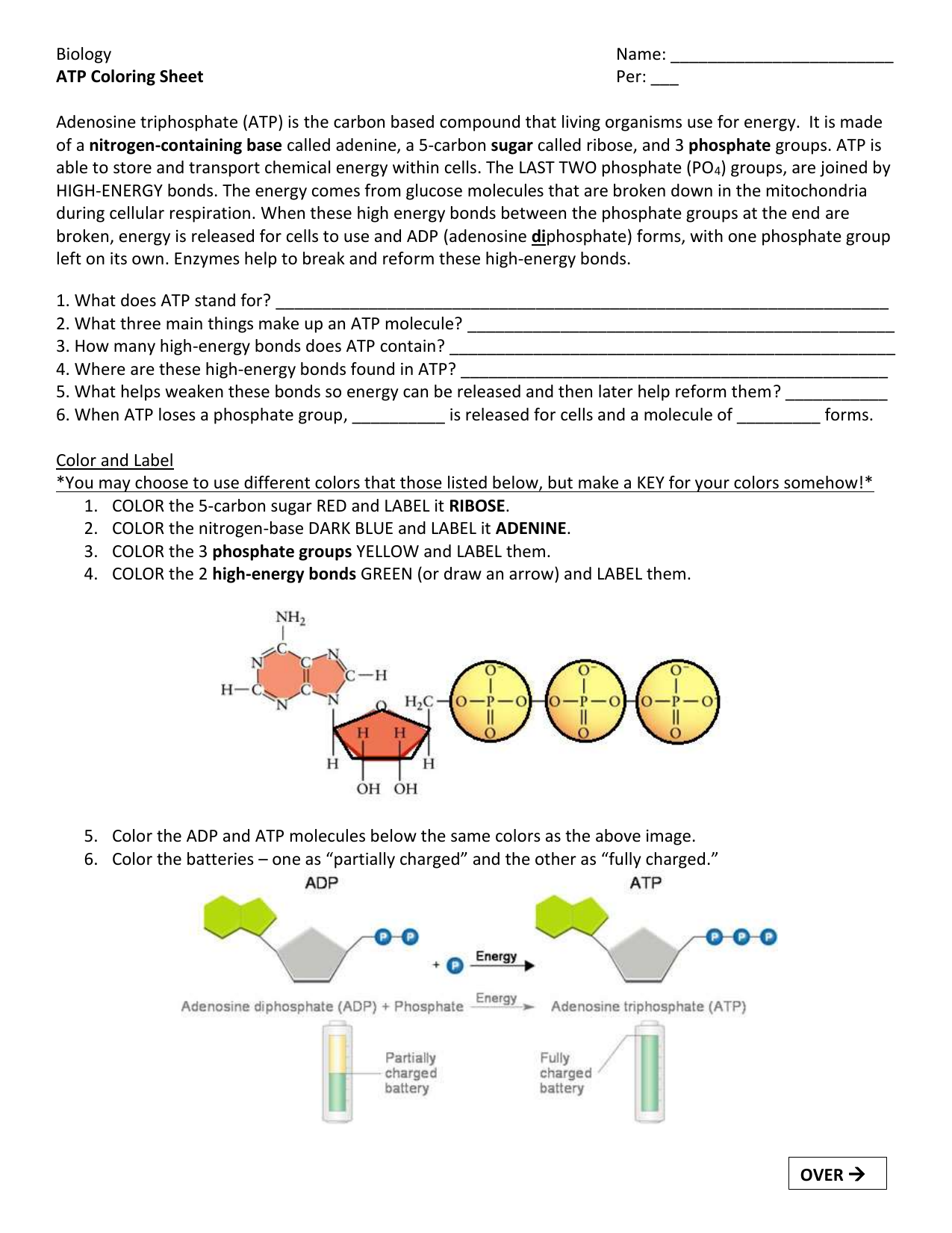

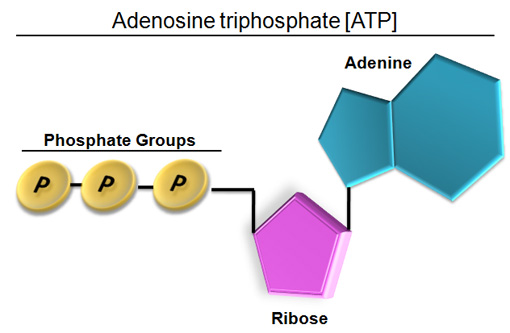

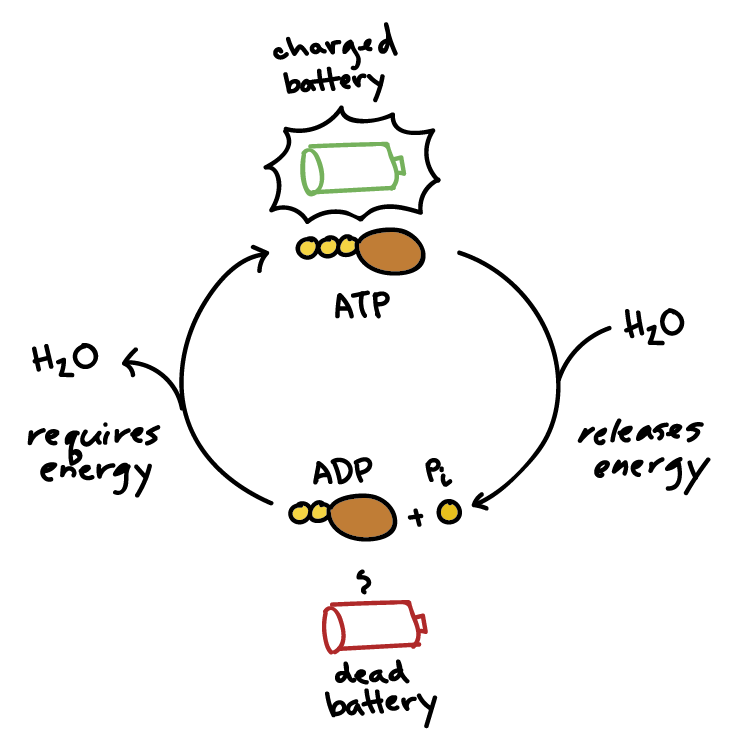








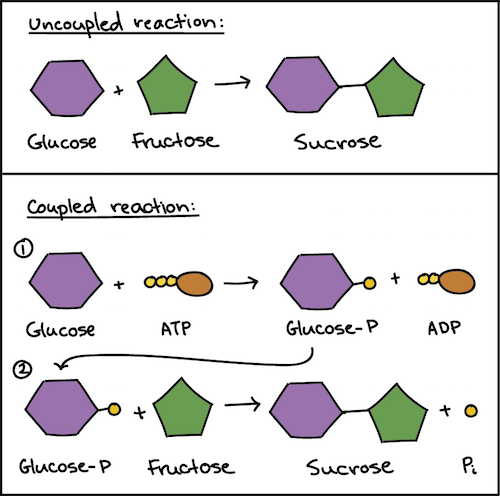








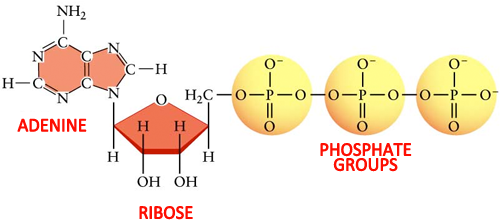
Post a Comment for "43 label each part of the atp molecule"